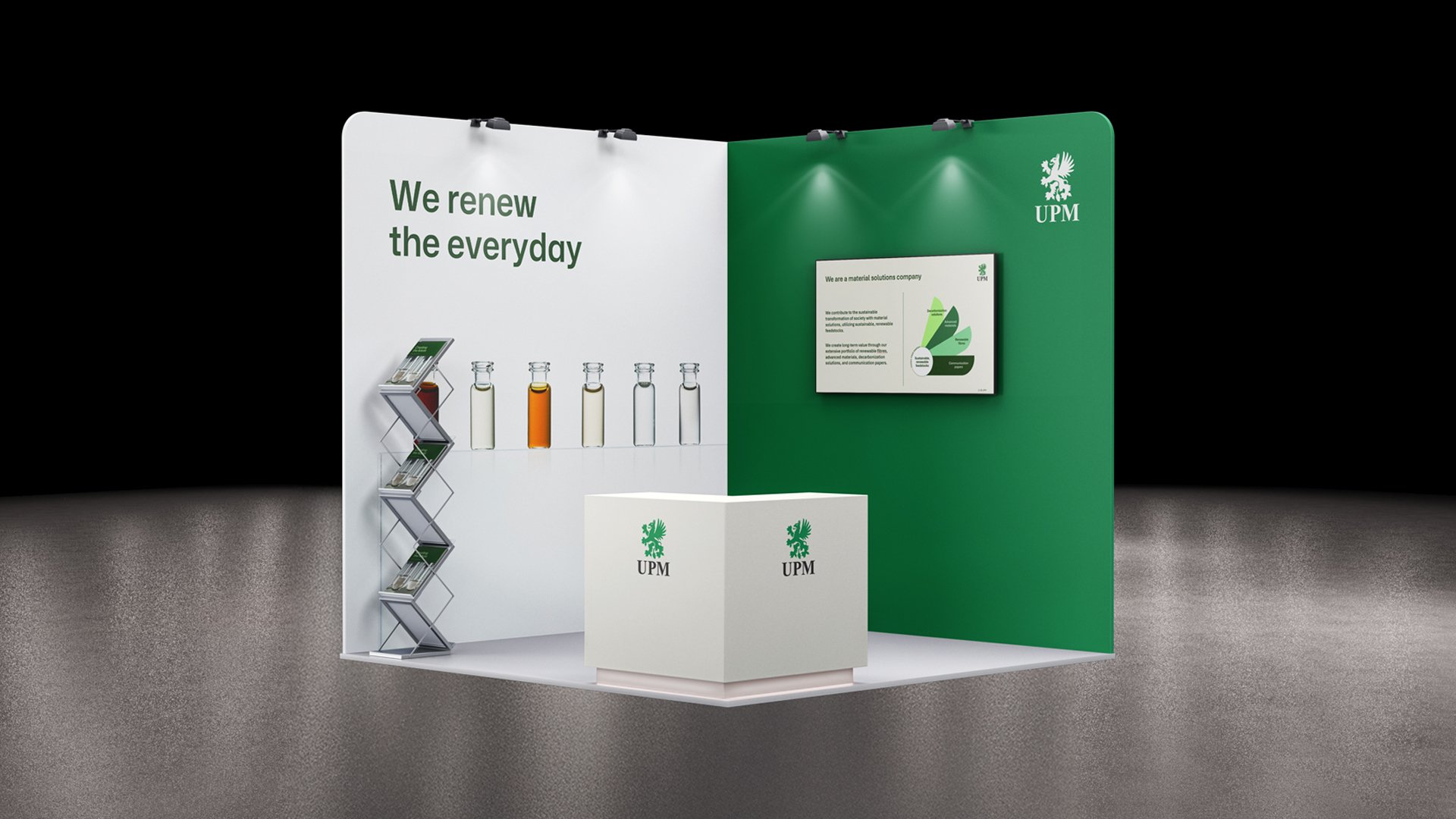
Corporate level - example of a small booth
The small event booth is intended for spaces with limited room, making a minimalist and strategic layout essential. Use the space efficiently and avoid including unnecessary elements that could create visual clutter.
Logo placement
Position the UPM logo at the center top of the reception desk for clear brand visibility. The logo should be the primary branding element and must remain unobstructed by other visuals.
Visual elements and color use
Incorporate key brand photos that align with UPM’s identity and complement them with official brand colors. This combination helps maintain a unified and professional appearance.
Wall design
Feature the UPM brand promise alongside the logo on the wall. Place both elements clearly and at an appropriate height to ensure they are easily seen and understood by visitors.
Balanced branding approach
Avoid overbranding the booth. Maintain a clean and focused design where the UPM logo booths out as the central visual element, without competition from excessive graphics or messages.